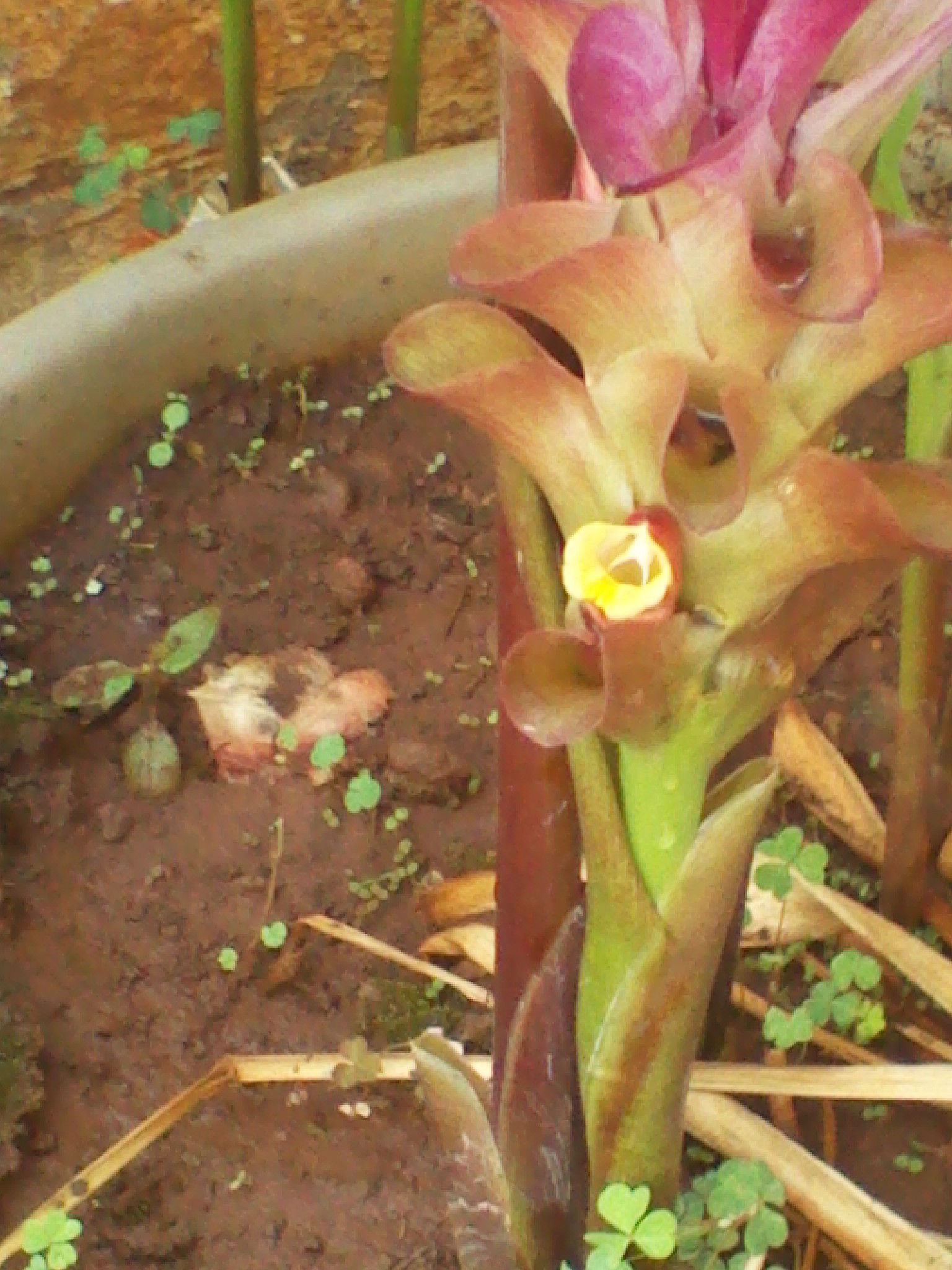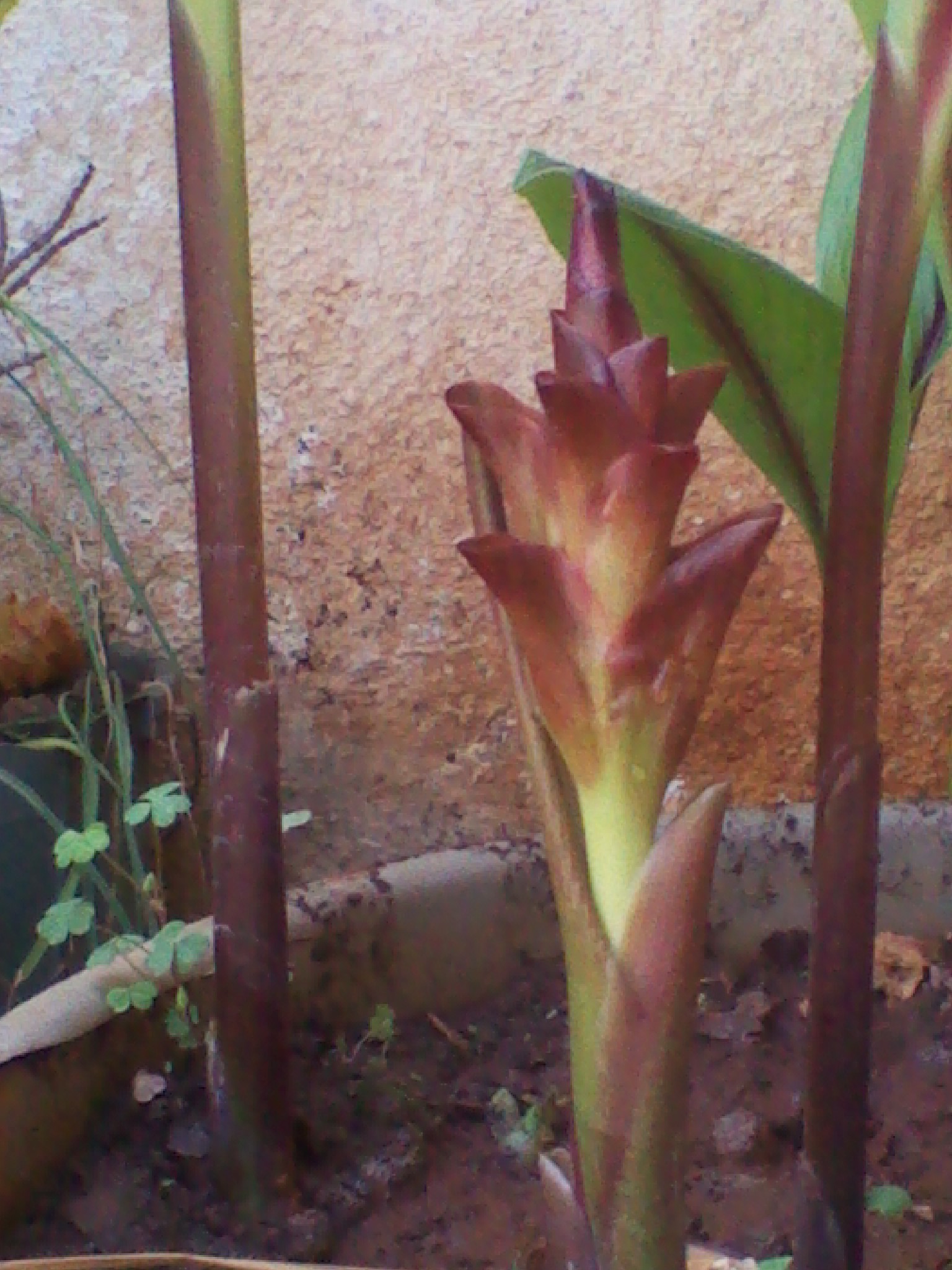    ID please of plant @ my home: I live at Nashik . Maharashtra, Some body gave me. ryzome of plant like Ginger Last year.
Now the plant has developed. And has Flowers to plant. but flower holder shoot out right from soil.
Photos of Development are attached . Please, Give me Identification of this plant. Of course a Curcuma but which one? caesia? I was thinking it was what is called kali haldi, most likely.. dont know the binomial though… Caesia refers to blue colour (which may be dark or light or almost brinjal coloured). Its the same species and it is called kali haldi because of the black or blue ring present inside the rhizome and the dry rhizome is black and also due to blue stripe on the midrib of the leaf. But such stripes are found in many Curcuma. Please check Curcuma zanthorrhiza Roxb. Please check whether the rhizome smells like camphor (Sabu 2006) A simple field identification key for Curcuma with purple patches on leaves
Three species showing this purple patches on leaves. C. zanthorrhiza, C. aeruginosa and C. caesia.
1. Curcuma zanthorrhiza: Rhizome colour is yellow to deep yellow, patch on both sides along the whole length of the midrib.
2. Curcuma aeruginosa: Rhizome colour blue in centre (or blue rings in the rhizome) verging towards grey, patch on the distal half on the upper side only.
3. Curcuma caesia: Rhizome colour is blue to dark blue, but densely pubescent on the upper part of the leaf. There are more species which have blue or purple markings on leaves. Yes, but this plant is collected from Nasik.
In these area very few plants showing this character. Maybe C.caesia (blue rhizome), C. zanthorrhiza (yellow-orange rhizome) or C.zedoaria (cream coloured rhizome). Check the colour of the rhizome. |
Disclaimer
1. For any mistake in identification or for becoming efloraofindia e-group member (for contributing towards building of efloraofindia or otherwise), pl. mail to indiantreepix@googlegroups.com or itpmods@googlegroups.com
2. For better viewing of species’ pages, colour scheme & formatting is being followed as: Description of the species, Details of other flora species on the same page, Uses/ harms, Distribution, Abundance/ Location/ Flowering time & date, Habit & habitat, Etymology & pronunciation, Other interesting information, stories etc., Others, Botanical names, Common names, Main point of discussion below, Discussion about Botanical names.
Navigation
- Award for eFloraofIndia
- Colour scheme & formatting
- Copyrights, Permissions, Citations
- eFloraofIndia appreciated
- Names of Plants in India site
- Flowersofindia site
- Posting Guidelines
- For members’ information
- Logo, Tagline, Acronym
- Volunteers required
- ‘Pitamah’ of eFloraofIndia
- ‘अजेय’ ‘Ajey’ of eFloraofIndia
- ‘Saarthi’ ‘सारथि’ of eFloraofIndia
- ‘Jewel’ of eFloraofIndia
- ‘Grassman’ of eFloraofIndia
